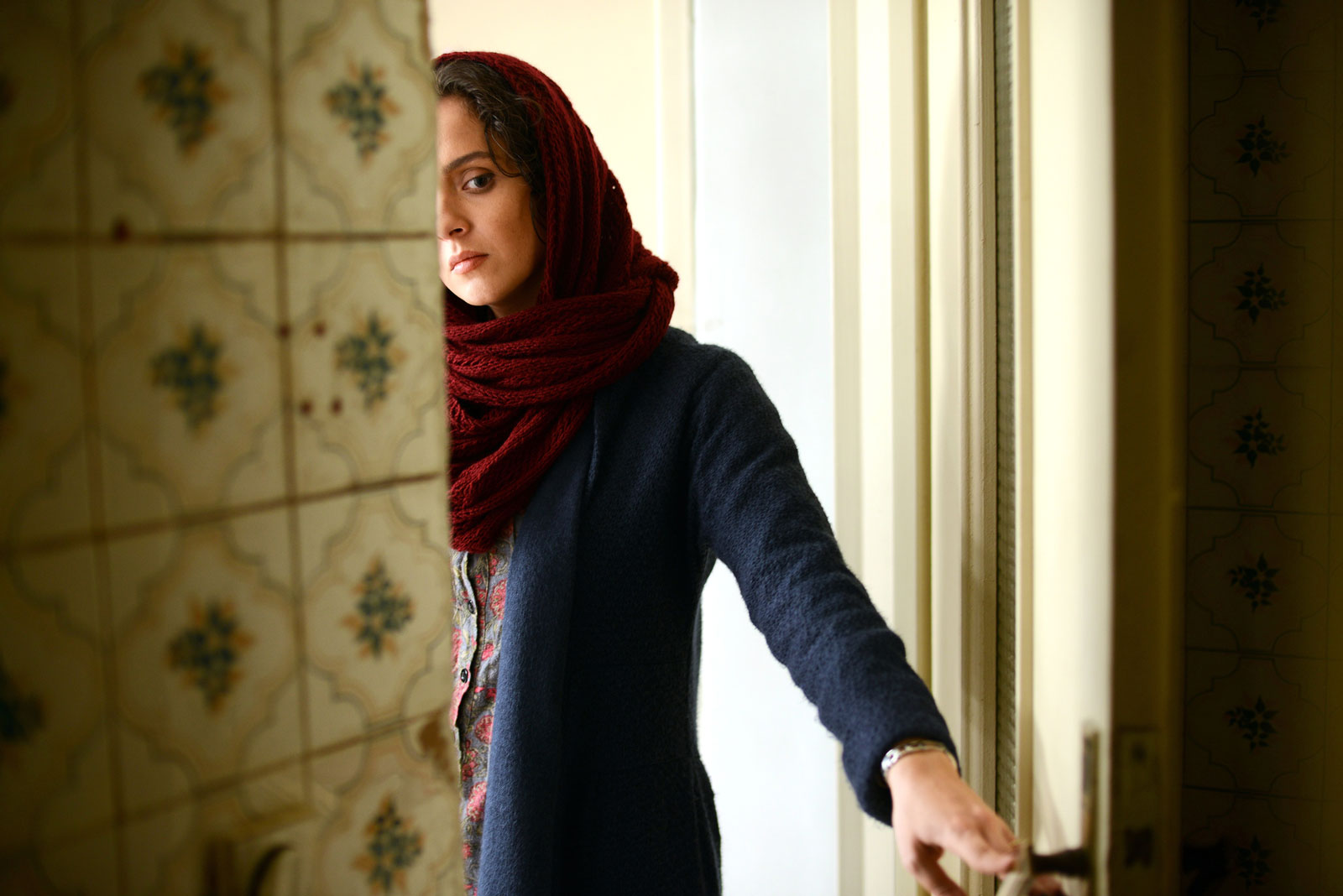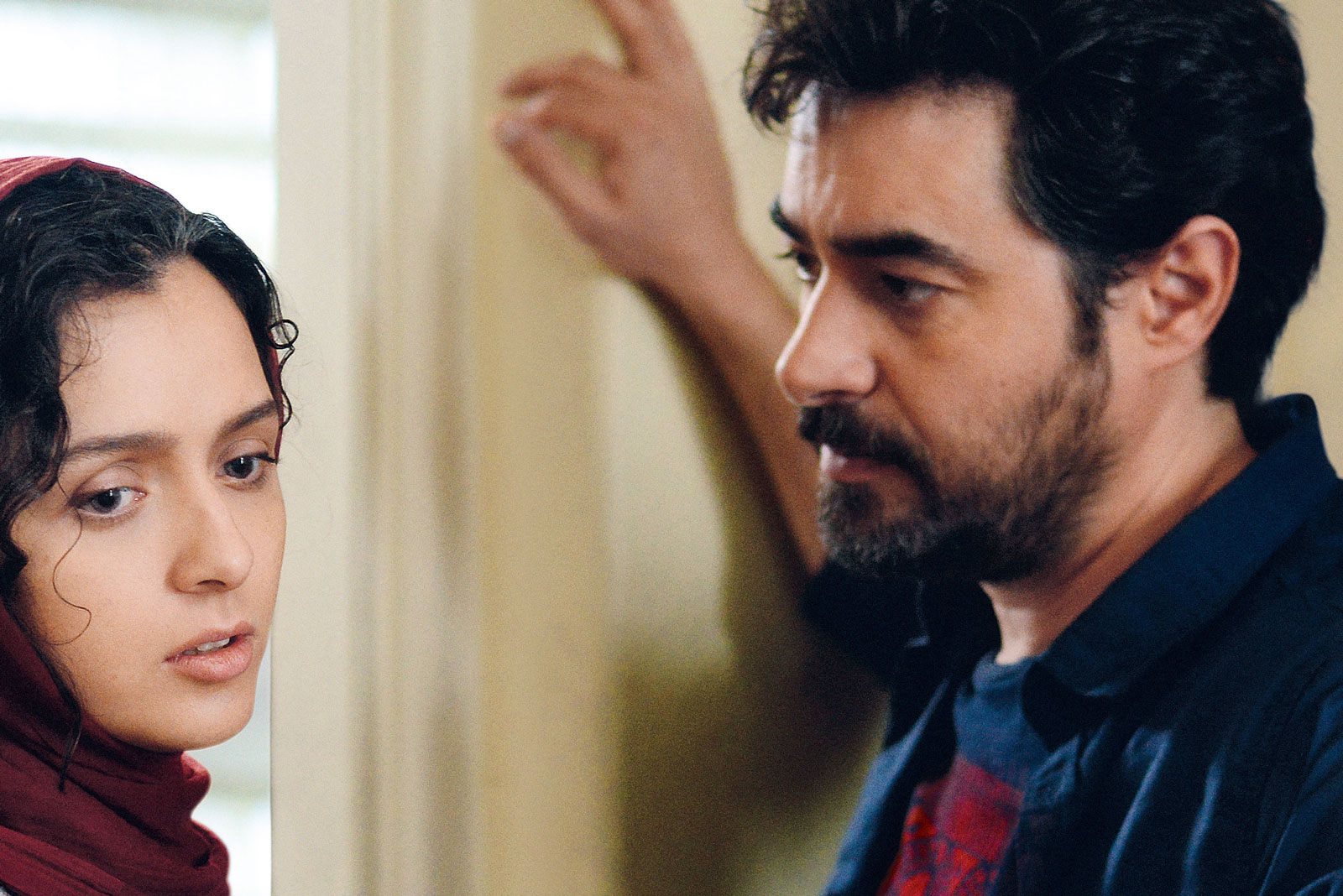Filmmaking is social science by other means. That could be the maxim of the Iranian director Asghar Farhadi. He is known for dropping ordinary calamities—a drowning, a miscarriage, an affair—into palsied social structures and watching these structures stress, clench, and agonize away. Watching his seventh and current film, The Salesman, I was reminded that while making audiences happy is its own justification—look at La La Land—feel-bad films must bribe their way to acceptance, offering either a voucher for moral indignation, scenes of a depraved or misanthropic nature (Michael Haneke is especially diligent in this regard), or a level of artistic achievement that transforms the act of observing other people’s misery into a general catharsis. For all its undoubted moments of power, however, The Salesman—which was recently nominated for an Oscar in the foreign-language film category—has surprising weaknesses.
Farhadi treats every film as a miniature, with a small number of precisely drawn characters. But in its exploration of the social forces that operate in his much-misunderstood homeland, The Salesman is more ambitious in scope than any of his films to date. Its subject, the inviolability of women and the ways that men exercise guardianship over it, is of course a universal theme. But to my knowledge it has never been dealt with in such surgical detail by a filmmaker in Iran.
The Salesman breaks taboos and, unlike earlier Farhadi films, notably the Oscar-winning A Separation, has been permitted a long run in Iranian cinemas by the state censors. (A Separation came out in 2011, before the glasnost of President Hassan Rouhani, and was only briefly allowed onto the big screen.) These two facts have made The Salesman the biggest grossing film in Iranian history. Admittedly, the sums involved are paltry in a country of relatively few movie theaters and a superabundance of pirated Batman v Superman: Dawn of Justice DVDs. But the film’s performance at the box office shows that it speaks forcefully to its primary audience.
Farhadi’s new film revolves around a married couple, the stage actors Rana (the excellent Taraneh Alidoosti) and her husband Emad—played by Shahab Hosseini, who shone in his supporting role as the pugnacious working-class husband Hojjat in A Separation. As the film opens, Rana and Emad are in rehearsal to star as Linda and Willy in a Persian production of Death of a Salesman. After the opening performance, while Emad remains at the theater dealing with the censor—troubled, no doubt, by the play’s suggestions of sexual and alcoholic dissolution—Rana returns to the couple’s new flat. There, she emerges from the shower in response to a ring at the doorbell. Thinking it is Emad, she buzzes in the new arrival, leaves the door ajar, and returns to her ablutions. The next thing she knows she is being molested by a strange man.
Here is The Salesman’s driving calamity. Rana’s instincts are to try and forget what has befallen her. Emad, on the other hand, wants revenge, and not solely for the distress caused to his wife—as the plot progresses it becomes clear that Emad is driven to track down Rana’s assailant above all by his sense that his guardianship of his wife has been challenged. This is made explicit in the film’s climactic scene, when Emad snares the perpetrator and Rana begs her husband to let him go—or their marriage is over. “Don’t interfere!” Emad snaps back.
To reach this moment, Farhadi has patiently layered his themes of patriarchy, reputation, and privacy. It emerges that the previous inhabitant of the couple’s flat was a prostitute, and Rana’s molester a former client. (“Salesman” is a not entirely satisfactory translation of the film’s Persian title; foroushande, which means “seller,” is either male or female, and can have sexual connotations.) Emad himself is stung when the woman next to him in a shared taxi makes clear her unhappiness at being seated in such close proximity to an unrelated male. And at the school where he teaches part time he confiscates a naughty boy’s smartphone and scrolls through his personal photographs; the burden of victimhood shifts.
Between the lines, expressed in glances and asides, is the suggestion that Rana, if not quite at fault for being molested, was culpably negligent for letting in a man who turned out not to be her husband. The way that this idea is released and allowed to drift offers a malignant subtext to Farhadi’s rigorous view of his own society, which, despite the uneven entry of egalitarian values, remains wedded to old-fashioned honor codes. The irony here is that the professional environment in which The Salesman is set—the theater—is often decried by Islamic hardliners for its moral dissipation; Rana and Emad’s relationship unravels in Iran at its most emancipated.
Advertisement
It is Alidoosti’s character who shows this most forcefully. Rana neither knows what has happened to her—she passed out after realizing that a stranger had entered her bathroom—nor, exactly, does she want to know. She circles warily around the truth, trying to distract herself—but she and we are slowly made aware that her assailant has changed the terms of her existence. Farhadi is brilliant at getting Iran’s leading ladies to cry; his aesthetic sense seems to demand this exchange of beauty for desolation. When Alidoosti breaks down, her loneliness is heart-rending.
For all the nuance in this performance, however, the film’s central partnership subsides into immobility. Apart from a few occasions (such as in the shared taxi, or the classroom), when he gives hints of a rounder character, Emad seems shaped only by suppressed male anger, and this becomes a trope rather than a trait, tiresomely reminiscent of the character he played in A Separation.
This does not seem to be the fault of the actor. When Farhadi allows him, Hosseini displays a more human panoply of emotions, and even–a full hour into the film–lets slip a smile. But he is never the equal of Rana in complexity. The beauty of A Separation was that no one was right. Here it is too clear with whom Farhadi’s sympathies lie.
A second conundrum is raised by the play within the film. Framing his story around a canonical text with which Western audiences are perhaps overfamiliar, and Iranian ones hardly at all, is risky. Scenes from the theater company’s performance of Death of a Salesman are folded into the film, and the actors’ ad-libbing and distortion of Miller’s lines effectively convey their private agony. But I was unclear as to what correspondence, if any, exists between The Salesman and Miller’s tale of despair and dashed expectations.
Farhadi seems to work best when directing three actors through their endless possibilities of word and heart: his last film, The Past, is a brilliantly sustained pas de trois, while in A Separation the orderly disintegration of a marriage is complicated and enriched by the couple’s daughter. So it is little surprise that the long, riveting final scene of The Salesman, dominated by the interplay of victim, perpetrator, and avenger, is the most complete of the film. Here, at least, Farhadi’s jungle is full of diamonds.
The Salesman will be released in the US on Friday, January 27.




